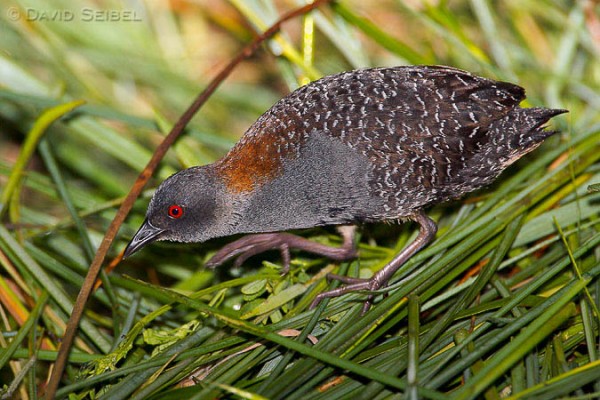Working for conservation and management of the Eastern black rail
Tracking whimbrels to tropical wintering grounds
September 7, 2009End of an era: Metompkin peregrine tower removed after 25 years
September 9, 2009
Written by Michael Wilson
September 8, 2009
The black rail has quietly slipped into being one of the most endangered birds along the Atlantic and Gulf Coasts. Black rails have long been known for their rarity among birders and conservationists but only recently have we become to realize how much at risk of extirpation they may be. Over the past 10-20 years, some reports indicate that populations have declined 75% or greater. Black rails may now only breed in a dozen or fewer places in each state along the Atlantic and Gulf Coasts. Reasons for the decline may be many. Negative impacts can include habitat loss and degradation, sea-level rise, predation, and environmental contaminants. These negative impacts remain unchecked and in many cases continue to escalate. It is unlikely that black rails will persist in many portions of this range without timely and appropriate conservation action.

Black rail walking through a salt marsh. Photo by David Seibel.
The greatest obstacle in enabling successful conservation of the black rail is that the scientific and conservation community lacks all of the required information needed to move forward. There has never been a comprehensive status assessment produced for this species and most of the population information exists only as scattered anecdotal reports, individual studies narrowly focused on specific sites, or unpublished marsh surveys.
We envision that a successful conservation for the black rail is centered on gathering the information needed to formulate and implement management actions, and activating a communication network of agencies, biologists, land managers, and concerned citizens to enable these actions.
The Center for Conservation Biology initiated the Eastern Black Rail Conservation and Management Working Group in November of 2009 by releasing a call for membership. We received a rapid response to the announcement of the working group that is now well represented by biologists from every state wildlife agency in the planning region, the U.S. Fish and Wildlife Service, U.S. Geologic Survey, NOAA, and researchers that have studied the species. This group’s membership is formulated to integrate the collective knowledge and efforts of a broad range of concerned agencies and biologists in order to change the tide and lead to a sustainable recovery.
This group’s near-term objective will be to develop a status assessment and a conservation action plan. Products produced through this effort will have the input of and provide direct benefits to state agencies responsible for implementing State Wildlife Action Plans, federal agencies involved with regional conservation, and non-governmental organizations involved with bird conservation at regional or national scales. This effort will also benefit other species that co-inhabit salt marsh ecosystems that are also conservation targets such as the saltmarsh sparrow, Nelson’s sparrow, clapper rail, Virginia rail, seaside sparrow, and Henslow’s sparrow.
We still welcome anyone who has interest and can provide input to the assessment and planning process. Visit the website of the Black Rail Working Group for more information.
Project sponsored by The Center for Conservation Biology (CCB).




